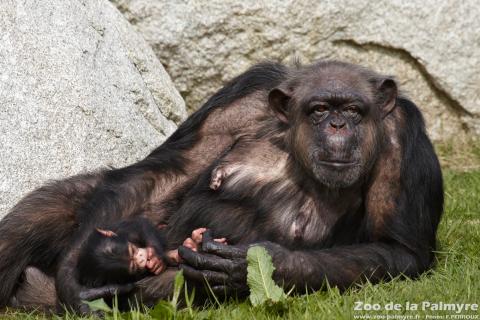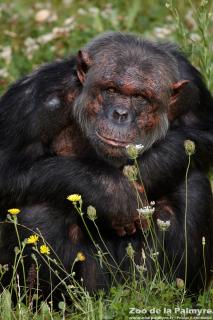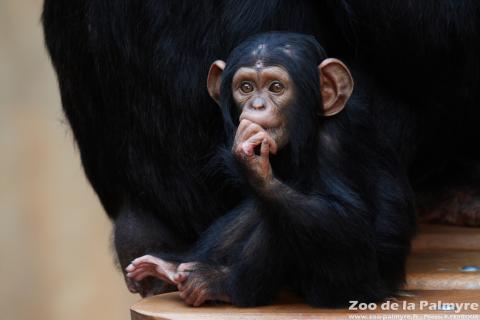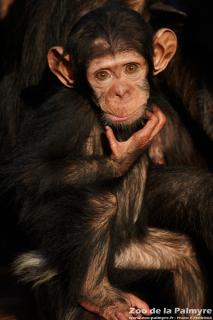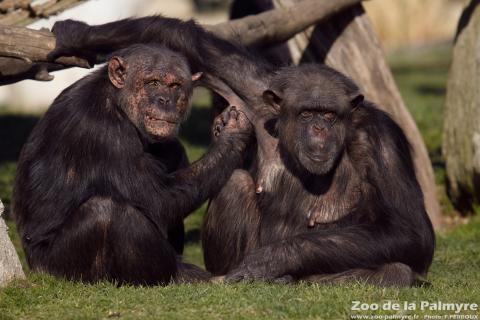Chimpanzee

Chimpanzee

-
Class
Mammalia -
Order
Primates -
Familly
Hominidae
-
 70–95cm
70–95cm -
 ♂ 30–70kg, ♀ 20–50kg
♂ 30–70kg, ♀ 20–50kg -
 7½ months
7½ months -
 1
1 -
 50 years
50 years
-
Diet
omnivorous (fruit, leaves, insects, eggs, medium-sized mammals) -
Habitat
tropical forest, shrub savannah -
Range
central and west Africa -
 This species is part of a European Breeding Program
This species is part of a European Breeding Program
-
Population in the wild
En diminution -
IUCN REDLIST status

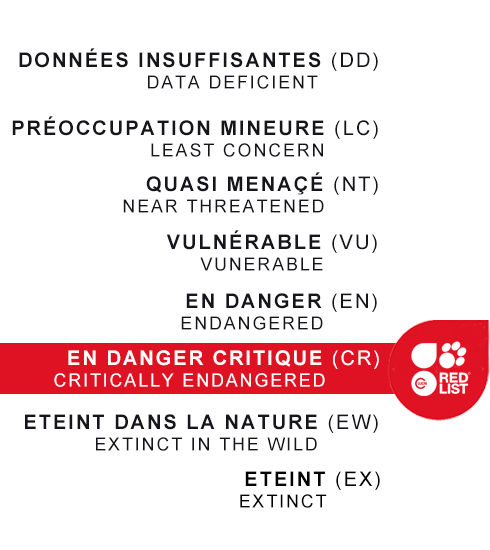
Chimpanzees live in multi-male/multi-female, fission-fusion societies in which individuals form small sub-groups the size and make-up of which vary throughout the day according to different factors: the abundance and distribution of food, the presence of ovulating females, the pressure exerted by predators… Communities number 30–40 on average but some contain up to 150 chimps.
Males dominate females and establish very strong links amongst themselves, forming gangs to hunt and to patrol the frontiers of their territory, attacking and sometimes killing members of neighbouring communities. They have complex relationships and their alliances evolve through time according to events that impact the community.
Chimpanzees have a strong hierarchy, and ‘grooming’ plays an important role in reinforcing social links between individuals and in appeasing the often acute tensions.
Females leave the group they are born into when they reach sexual maturity while males are philopatric and remain in their birth-group permanently. The relationship between mothers and their young endures. Mothers and sons have very deep, lasting relationships and a male’s rank in the hierarchy is often influenced by his mother.
Chimpanzees are as much at ease on the ground as in trees. They generally move about on all fours but can become bipedal over short distances when carrying objects or putting on intimidating displays.
They can use sophisticated tools to clean themselves, communicate or explore their environment, and most of all to get to a source of food more easily. These behaviours are transmitted from generation to generation but differ from one community to another, which explains the use of the term ‘culture’. Chimpanzees are the only apes to hunt other mammals (monkeys, antelopes…) in an organised fashion. Hunts are often led by adult males, who then share their catch with other members of the community, especially those who have helped and the adult females.
Chimpanzees generally have several mates but a dominant male can control access to a female by stopping other males mating with her. A couple can also leave the community and head into the forest for several days or weeks. During the few days when a female is receptive, her anogenital region swells up and turns bright pink.
Females give birth to a single young after a pregnancy lasting about 7 and a half months. The young clings to its mother’s belly before being carried around on her back and is only weaned at the age of 4 or 5 years, after having developed its personality and learnt all the techniques it needs to survive.

